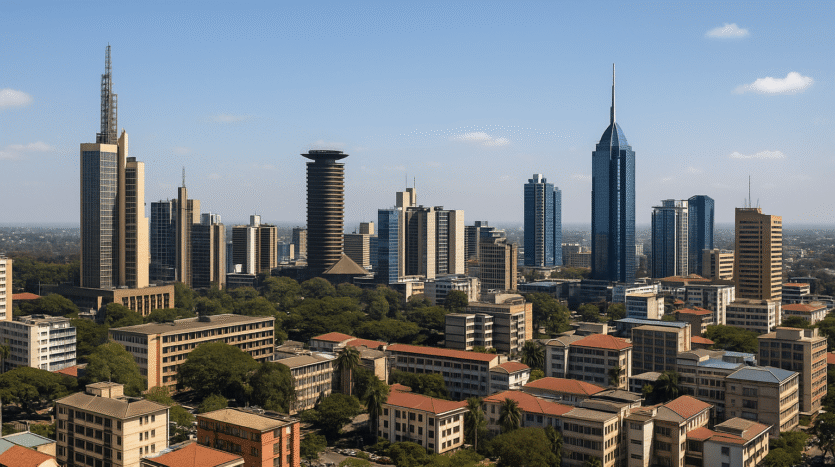Who Are the Tenants in the Nairobi Real Estate Market?
Nairobi has one of the most diverse rental markets in East Africa. Because it is a regional business hub, diplomatic center, and home to major international organizations, the city attracts a wide range of renters with different needs and budgets. Understanding who these tenants are helps investors choose the right type of apartment and set the right rental strategy.
Below are the main categories of tenants in Nairobi’s rental market:
1. Young Professionals and Corporate Employees
This is one of the largest and fastest-growing tenant groups. They include:
- Employees working in Westlands, Upper Hill, Kilimani, Kileleshwa, Lavington, CBD, and Karen
- Middle-income earners looking for convenience and modern amenities
- Individuals who prefer 1–2 bedroom units near office districts
Preferred areas: Westlands, Kilimani, Kileleshwa, Upper Hill, Parklands, Lavington
Preferred units: 1BR, 2BR and modern studios
Why they rent: Proximity to work, lifestyle amenities, security and modern finishes
2. Expatriates and Diplomats
Nairobi hosts embassies, NGOs, UN agencies, tech companies, and multinational headquarters. This brings in thousands of expatriates.
Preferred areas: Gigiri, Runda, Westlands, Lavington, Kileleshwa
Preferred units: Fully furnished apartments, serviced apartments, townhouses
Why they rent: Security, international schools, proximity to offices, high-quality amenities
3. Kenyan Diaspora Tenants Returning Temporarily
Many Kenyans living abroad return for:
- Holidays
- Work trips
- Family functions
- Long stays during relocation
Instead of staying in hotels, many prefer renting:
- Furnished apartments
- Airbnb units
- Serviced apartments
Preferred areas: Westlands, Kilimani, Kileleshwa, Lavington.
This segment has increased demand for short-stay rentals.
4. University and College Students
With many higher-learning institutions in Nairobi, students make up a large tenant population.
Preferred areas: Around USIU, KU, Daystar, JKUAT , Strathmore, Riara and UoN
Preferred units: Bedsitters, studios, affordable 1BR units
Why they rent: Proximity to campus, affordability
Investors often target this group for high-occupancy, low-vacancy properties.
5. Digital Nomads and Remote Workers
Nairobi has become a hotspot for remote workers due to:
- Reliable internet
- Growing tech scene
- Affordable living costs
- Lifestyle amenities
Preferred areas: Westlands, Lavington, Kilimani, Kileleshwa and Riverside.
Preferred units: Furnished studios, 1BR units, co-living spaces
Why they rent: Fast internet, coworking spaces, modern interiors
This group is boosting demand for Airbnb and serviced apartments.
6. Families
Families occupy a significant share of Nairobi’s rental units.
Preferred areas: Kileleshwa, Lavington, Kilimani, Westlands, South C, Lower Kabet and Lang’ata.
Preferred units: 2BR, 3BR and 4BR apartments
Why they rent: Schools, security and comfort
7. High-Net-Worth Individuals and Executives
This is a smaller but important segment, usually looking for premium units.
Preferred areas: Riverside, Loresho, Karen, Lavington, Kileleshwa and Westlands
Preferred units: Luxury 2–4 bedroom apartments, penthouses, townhouses
Why they rent: Privacy, amenities, upscale living
8. Short-Stay Tourists and Business Travelers
This group has increased demand for:
- Airbnb apartments
- Serviced apartments
- Short-term furnished rentals
Preferred areas: Westlands, Kilimani, Kileleshwa and Riverside.
Why they rent: Flexibility, affordability, comfort, and proximity to attractions
Why This Matters for Investors
Understanding tenant profiles helps you choose:
- The best apartment type (studio/1BR/2BR/etc.)
- The best area for consistent rents
- Whether to invest in furnished vs. unfurnished
- Whether to target Airbnb, long-term tenants, or corporate tenants
If you tell me your budget and target neighbourhood, I can help you determine which tenant group you’re likely to attract and the expected rental income.

